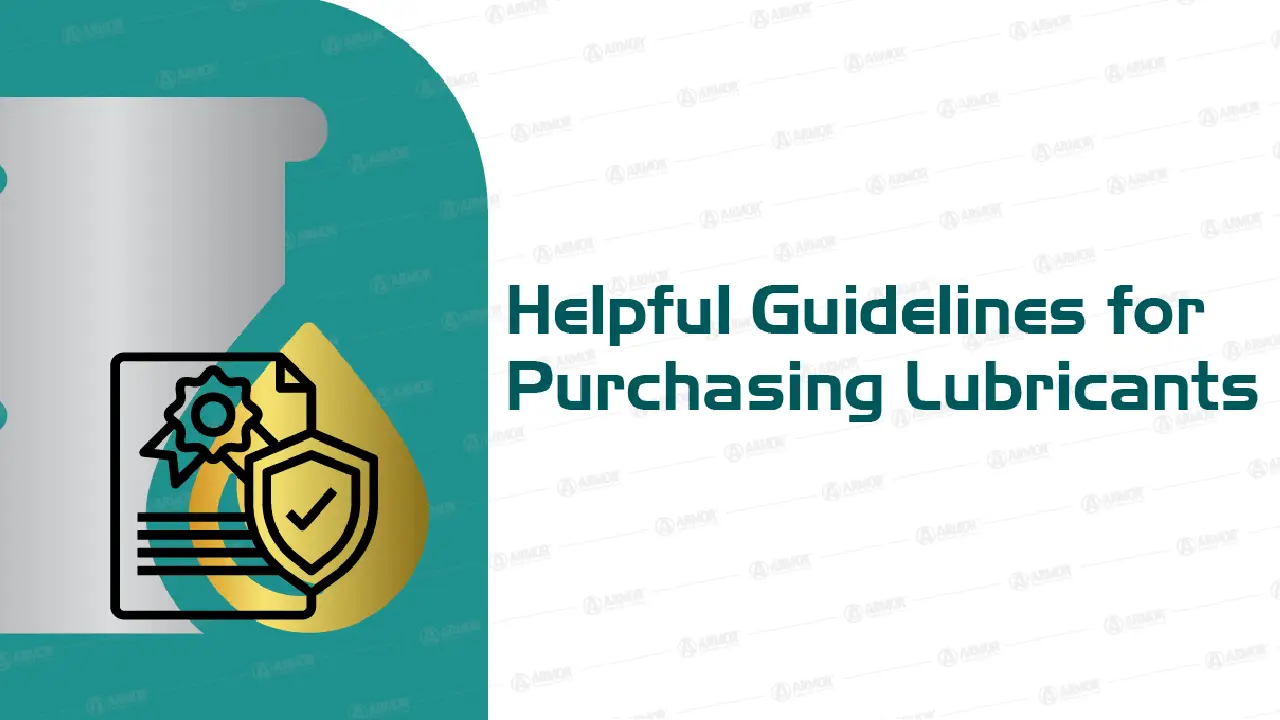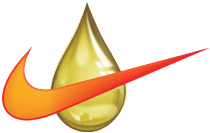- Armor Blog
- Consumer Education
- 10 Helpful Guidelines for Purchasing Automotive Lubricants

Things to Consider Before Purchasing Automotive Lubricants
Lubricants are essential for automobiles, whether we’re talking about a personal vehicle, a racecar, a heavy-duty truck, or something completely different. Without lubricants, metal-on-metal friction would soon cause everything to grind to a stop. With that being said, purchasing lubricants can be confusing, particularly for those who are not all that familiar with the industry.
In this guide, we will explore the recommendations necessary for purchasing, storing, and handling lubricants, as well as the major players in the industry and what you should know about them.
Automotive Lubricants: More Than Engine Oil
For many people, the automotive lubricant Oil market can be summed up with one product: engine oil. While that is one of the most critical products, many other lubricants play a role here, including:
- Transmission fluid
- Power steering fluid (hydraulic oil)
- Gear oil (also called gear dope)
- Bearing grease
- Brake fluid
While not all fluids provide textbook lubrication for moving parts, all of them are subject to many of the same stressors, such as high heat and pressure. Many of them are also petroleum-based, and all must be changed from time to time to ensure protection and to remove contaminants from the system.
Most of the major players in the automotive engine oil market also manufacture more than just car oil. For instance, Royal Dutch Shell PLC, the world’s top-rated automotive lubricants manufacturer, also makes motorcycle engine oil, heavy-duty engine oils, gear oil, and much more.
Important Information about Liquid Lubricants:
When buying liquid lubricants, whether that is car engine oil, gear oil, power steering fluid, or something else, you will need to make several similar considerations. These include the following:
Viscosity: Viscosity is a measure of a liquid lubricant’s ability to lubricate, performance at different temperatures, and viscousness. The higher the number on the container (5W30, 10W40, etc.), the more viscous the oil and the “thicker” it will be. Viscosity is perhaps the single most important factor to consider when purchasing liquid lubricants because it describes the lubricant’s performance within the engine application. If the viscosity is wrong, the engine will not see the protection from heat and friction it requires.
In fact, viscosity is so important that the Society of Automotive Engineers (SAE) actually classifies engine oils by their viscosity rating (the aforementioned 5W30 and 10W40 as examples). However, industrial lubricants are classified differently, such as by ASTM D2422 or ISO 3448.
Pour Point: Another important factor when choosing automotive oil is the product’s “pour point”. This is the temperature at which the lubricant will flow properly. It’s important in a range of situations but is particularly essential when starting an engine cold (as well as for engines that operate in cold areas of the planet).
It’s also an important consideration for gravity-fed systems that do not rely on forced fluid movement. For instance, automotive engine oil is pumped to the top of the engine via an oil sump, where it lubricates the camshaft and related components, but then flows down through the engine due to the force of gravity.
Additives like pour-point depressants can lower the pour point of a lubricant. This makes it usable in a wider range of temperatures and climatic conditions.
Cloud Point: The cloud point of a lubricant is the temperature at which any waxes in the formulation begin to become visible and separate from the lubricant itself. Waxes can offer improved functionality in some instances but must be tightly controlled, as they can clog filters when they begin to separate from the oil, creating problems like reduced oil flow and increased systemic pressure.
Flash Point: A lubricant’s flashpoint is the temperature at which any vapor in the system over the liquid will ignite if exposed to a source of ignition (spark). If a lubricant has a flashpoint of under 60 degrees C, it is considered flammable. The typical flashpoint for engine oil is 225 degrees C.
Fire Point: The fire point of a lubricant is usually eight to 10% higher than the flashpoint, and is the temperature at which the liquid lubricant will ignite when exposed to a source of ignition (spark).
Auto-Ignition: This is the temperature at which a lubricant will spontaneously combust without the need for an ignition source. It should not be confused with the flash or fire points of a lubricant.
All of the factors discussed above should be considered when purchasing lubricants, as they will affect engine performance and lifespan. They will also affect fuel costs, operability, maintenance costs, and a great deal more. Of course, there are other things that buyers should know.
Storage and Handling as Additional Considerations
Unless you are purchasing very small quantities of lubricants, you will need to safely store your product for future use and access. Storage and handling of lubricants are vital considerations and must be done properly. There are three primary focus areas here:
- Preventing contamination
- Preventing confusion
- Providing containment
Contamination
Lubricants will work as described by the manufacturer so long as the product remains uncontaminated with other materials. Contamination during storage and handling of lubricants is unfortunately common and is almost universally due to human error at some point in the process. For instance, if a container is not sealed properly, air and moisture can enter and contaminate the lubricant. Once contaminated, it is not possible to remove the contaminant(s) and the entire container must be discarded, which wastes money, resources, and time. It must also be disposed of properly to avoid environmental damage, which can incur additional costs and time.
Confusion
Improperly stored lubricants can be confused with other products by your personnel. It is critical to have a storage plan that ensures each lubricant used has a specific place within the inventory. Your products should also be clearly labeled and organized to help prevent confusion. Using a lubricant in the wrong application can lead to wasted time and money at best. At worst, it could cause serious damage to the system, up to and including the destruction of the system. For instance, using transmission fluid in place of engine oil could lead to the engine seizing. Using power steering fluid (a flammable liquid) in the wrong application could lead to a fire.
Containment
All automotive lubricants have the potential to cause environmental damage, even in small amounts. It is important to have a containment plan in place that helps ensure that any accidents, such as spills, do not lead to environmental harm. Your containment plan should include everything from an appropriate storage area to safe handling practices for personnel, cleanup tools and supplies (oil dry, etc.), and more.
Additional Tips for Safe Storage and Handling
Purchasing automotive lubricants requires that you have the right storage and handling policies, procedures, and facilities in place. The following tips will help ensure that you can purchase the right lubricants, store it properly, use it before it goes bad, and avoid potential accidents.
Use It Up: While automotive lubricants will remain viable for a long time, they will eventually go bad. Throwing away unused oil or other lubricants is not just a waste of money, but also a waste of natural resources. Create a use plan that ensures the old product is used before the new product. This should be the basis for your reordering, as well.
Check Containers: Improperly sealed or damaged containers are the primary causes of lubricant contamination and spoilage (when not exceeding the product’s shelf life). Ensure that all containers are in good condition, tightly sealed, and not subject to environmental conditions that might degrade them. For instance, if you must store some of your lubricants outdoors, ensure that you use containers capable of withstanding direct exposure to sunlight, as well as rain, temperature fluctuations, and other forces.
Filters and Protection: If putting lubricants into bulk tanks, it is important to understand that large, bulk containers come with their own environmental constraints. For instance, it is much easier for condensation to form in these, which can contaminate lubricants, rendering them useless. Install filters on tanks to prevent water from entering. Breathers and secured hatches can also help minimize contaminant potential. Galvanized metals should be avoided in most cases, as they can react badly with some types of lubricant additives.
Key Players in the Automotive Lubricants Market
With the buying guidelines out of the way, it’s time to turn our attention to the main players within the automotive lubricants market. You’ll find some well-known names here. The top manufacturers according to MarketWatch are as follows, in descending order:
- Royal Dutch Shell PLC
- Exxon Mobile
- BP p.l.c.
- Chevron
- Total
- China National Petroleum Corporation
- IDEMITSU KOSAN
- SINOPEC
- FUCHS PETROLUB SE
However, many other companies play smaller, supporting roles in the industry, including the following:
- AMSOIL INC.
- Gazprom Neft PJSC
- Armor Lubricants
- LUKOIL
- Motul
- Phillips 66 Company
- Valvoline Inc.
Key Trends in the Automotive Lubricants Industry
The automotive lubricants industry has undergone significant evolution in the past several years. Many forces are at work here, including the repercussions of the COVID-19 pandemic.
Some of the most important trends and insights to inform your purchasing of automotive lubricants include the following:
- North American and European markets continue to see declining demand for lubricants, as does much of Russia.
- The Asia-Pacific region continues to see the greatest growth and demand for automotive lubricants, with China leading the way. However, India, Australia, Vietnam, and other nations in the region continue to see increasing demand for lubricants.
- The Middle East, Africa, and South America are also experiencing strong growth in demand for all types of automotive lubricants, particularly in terms of products specifically formulated for the unique climatic conditions and use cases in those areas.
Why Choose Armor Lubricants?
Manufacturing a full range of industrial and automotive lubricants brands, from engine oil to brake fluid, automatic transmission fluid to hydraulic oil, Armor Lubricants is based in the United Arab Emirates (UAE). We design and manufacture lubricants in the UAE for the Middle Eastern markets, as well as for regional markets around the world. We formulate our products to meet the specific climatic conditions our customers experience. However, there are many other reasons to choose Armor Lubricants.
Locally Based with a Global Reach
While we are based in the UAE and design a broad range of lubricants for our local market, we have global reach and can formulate lubricants for any need, from the cold temperatures of extreme northern or southern latitudes to the constant heat of the equator. Our production plant has a capacity of 50,000 MT per year, allowing us to blend and fill orders large and small, and then expedite shipment to anywhere on the planet. We export lubricants to over 58+ countries in the world, including Europe, Africa, Asia, throughout the Middle East, North and South America.
Custom Lubricants
While we manufacture a wide rage of lubricants for use globally, we also have the capacity to serve your specific needs. We offer an extensive raw materials inventory coupled with the experience and expertise necessary to formulate lubricants for specific climatic conditions, use cases, engine types, applications, and specifications. We specialize in custom-blended petroleum, solvent, and water-based products.
We also have the ability to package those products as needed, whether that is in bulk containers or customized packaging for resale.
Certification and Compliance
At Armor Lubricants, we understand the importance of formulating our products correctly. All of our automotive lubricants meet or exceeds ISO, API, and SAE standards. Our plant is certified for ISO 9001, ISO 14001, ISO 45001, and OHSAS 18001. The American Petroleum Institute (API) has also given our full product range its stamp of approval.
Interested in learning more about how Armor Lubricants can meet your needs? Whether you’re interested in purchasing our existing branded lubricants or would like to speak with us about custom-blended products, Speak to our sales team today.
Armor lubricants is manufacturer and supplier of oil for automotive, industrial, marine, and more. The factory is located in Sharjah, United Arab Emirates. The company exports its first-class products to more than 49 countries world-wide as a one of the fastest growing Automotive lubricant company in the Middle east. The products meet and exceed international best practice standards to achieve complete customer satisfaction.



 Spear Lubricants
Spear Lubricants Armada lubricant
Armada lubricant Ace lubricants
Ace lubricants Perfect lubricants
Perfect lubricants Enzo lubricants
Enzo lubricants Lawrence lubricants
Lawrence lubricants